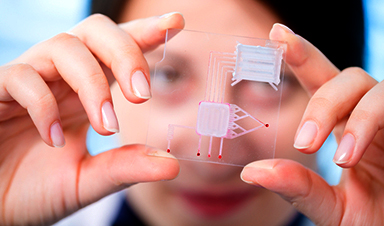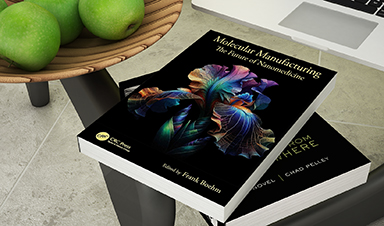Cancer biomarkers circulating in body fluids can be used for diagnosis and treatment monitoring. However, current detection technology lacks the required sensitivity, limiting biomarker use in clinical applications.
Colorectal cancer is the second most common cancer in Europe with respect to incidence and mortality. Although early detection significantly improves outcome, screening compliance in the wider population is low due to the invasive nature of the colonoscopy procedure.
To facilitate prompt cancer diagnosis, the EU-funded ULTRAPLACAD project developed an in vitro platform for the detection of cancer nucleic acid and protein biomarkers circulating in the blood. “The idea was to improve biomarker detection sensitivity by a factor of 1 000, reduce the cost four-fold and the analysis time down to 1 hour,″ explains project coordinator Prof. Giuseppe Spoto of the University of Catania in Italy. The project team involved 13 partners across Europe with cross-disciplinary competencies, including pioneers in surface plasmon resonance.
Innovative technologies
The ULTRAPLACAD device has been designed to integrate a microfluidic circuit with functionalised nanostructure chips. It combines nanostructure-enhanced surface plasmon resonance imaging (NESPRI) and plasmon-enhanced fluorescence spectroscopy imaging (PEFSI). These two novel sensing technologies provide ultrasensitive detection and reduce the need for sample chemical modifications.
Chip design, surface architecture and chemical functionalisation of nanostructures facilitate the simultaneous measurement of multiple markers. For efficient nucleic acid detection, such as Ras mutations and miRNAs, specific probes have been synthesised. The disposable chips are mass produced through an automated fabrication process, which brings down the cost of the assay.
Traditionally, detection of minute amounts of DNA released in body fluids by tumour cells necessitates a pre-amplification step by polymerase chain reaction. The novelty of ULTRAPLACAD lies in the detection assays that do not require enzymatic amplification of DNA in liquid biopsies, thereby avoiding potential errors.
A bimodal reader for NESPRI and PEFSI technologies makes the ULTRAPLACAD device unique and improves the overall detection process even further. As Dr Spoto emphasises “the main advantage of the device is that it can detect both nucleic acids and protein using one single equipment operating with disposable chips.″
The ULTRAPLACAD prototype has been validated using animal models and samples from colorectal cancer patients. Results demonstrate that the sensitivity of the device exceeds conventional detection platforms and the whole assay is faster and simpler in its implementation.
The future of ULTRAPLACAD
Undoubtedly, the combined detection of cancer DNA sequences and selected tumour autoantibodies provide an effective cancer detection approach. ULTRAPLACAD offers a unique platform that can detect both DNA and protein cancer biomarkers, simplifying the process of diagnosis and patient follow-up.
Considering the limitations of existing colorectal cancer screening choices, ULTRAPLACAD offers a non-invasive alternative solution for average-risk asymptomatic people. As such, it will reduce the number of invasive procedures, cut down healthcare costs, and improve patient compliance and management.
Although the platform was specifically fabricated for early diagnosis and prognosis of colorectal cancer, its application can extend to other types of cancer. Long-term, it is also expected to determine the molecular heterogeneity of individual tumours, helping disease stratification and personalised therapy. In view of the future, Prof. Spoto envisages “the ULTRAPLACAD device will contribute to revolutionise molecular diagnosis of cancer and make a difference in cancer care.″
News
Two New Books From Frank Boehm, NA Founder – To be Released Dec. 2025
Molecular Manufacturing: The Future of Nanomedicine This book explores the revolutionary potential of atomically precise manufacturing technologies to transform global healthcare, as well as practically every other sector across society. This forward-thinking volume examines [...]
What could the future of nanoscience look like?
Society has a lot to thank for nanoscience. From improved health monitoring to reducing the size of electronics, scientists’ ability to delve deeper and better understand chemistry at the nanoscale has opened up numerous [...]
Scientists Melt Cancer’s Hidden “Power Hubs” and Stop Tumor Growth
Researchers discovered that in a rare kidney cancer, RNA builds droplet-like hubs that act as growth control centers inside tumor cells. By engineering a molecular switch to dissolve these hubs, they were able to halt cancer [...]
Platelet-inspired nanoparticles could improve treatment of inflammatory diseases
Scientists have developed platelet-inspired nanoparticles that deliver anti-inflammatory drugs directly to brain-computer interface implants, doubling their effectiveness. Scientists have found a way to improve the performance of brain-computer interface (BCI) electrodes by delivering anti-inflammatory drugs directly [...]
After 150 years, a new chapter in cancer therapy is finally beginning
For decades, researchers have been looking for ways to destroy cancer cells in a targeted manner without further weakening the body. But for many patients whose immune system is severely impaired by chemotherapy or radiation, [...]
Older chemical libraries show promise for fighting resistant strains of COVID-19 virus
SARS‑CoV‑2, the virus that causes COVID-19, continues to mutate, with some newer strains becoming less responsive to current antiviral treatments like Paxlovid. Now, University of California San Diego scientists and an international team of [...]
Lower doses of immunotherapy for skin cancer give better results, study suggests
According to a new study, lower doses of approved immunotherapy for malignant melanoma can give better results against tumors, while reducing side effects. This is reported by researchers at Karolinska Institutet in the Journal of the National [...]
Researchers highlight five pathways through which microplastics can harm the brain
Microplastics could be fueling neurodegenerative diseases like Alzheimer's and Parkinson's, with a new study highlighting five ways microplastics can trigger inflammation and damage in the brain. More than 57 million people live with dementia, [...]
Tiny Metal Nanodots Obliterate Cancer Cells While Largely Sparing Healthy Tissue
Scientists have developed tiny metal-oxide particles that push cancer cells past their stress limits while sparing healthy tissue. An international team led by RMIT University has developed tiny particles called nanodots, crafted from a metallic compound, [...]
Gold Nanoclusters Could Supercharge Quantum Computers
Researchers found that gold “super atoms” can behave like the atoms in top-tier quantum systems—only far easier to scale. These tiny clusters can be customized at the molecular level, offering a powerful, tunable foundation [...]
A single shot of HPV vaccine may be enough to fight cervical cancer, study finds
WASHINGTON -- A single HPV vaccination appears just as effective as two doses at preventing the viral infection that causes cervical cancer, researchers reported Wednesday. HPV, or human papillomavirus, is very common and spread [...]
New technique overcomes technological barrier in 3D brain imaging
Scientists at the Swiss Light Source SLS have succeeded in mapping a piece of brain tissue in 3D at unprecedented resolution using X-rays, non-destructively. The breakthrough overcomes a long-standing technological barrier that had limited [...]
Scientists Uncover Hidden Blood Pattern in Long COVID
Researchers found persistent microclot and NET structures in Long COVID blood that may explain long-lasting symptoms. Researchers examining Long COVID have identified a structural connection between circulating microclots and neutrophil extracellular traps (NETs). The [...]
This Cellular Trick Helps Cancer Spread, but Could Also Stop It
Groups of normal cbiells can sense far into their surroundings, helping explain cancer cell migration. Understanding this ability could lead to new ways to limit tumor spread. The tale of the princess and the [...]
New mRNA therapy targets drug-resistant pneumonia
Bacteria that multiply on surfaces are a major headache in health care when they gain a foothold on, for example, implants or in catheters. Researchers at Chalmers University of Technology in Sweden have found [...]
Current Heart Health Guidelines Are Failing To Catch a Deadly Genetic Killer
New research reveals that standard screening misses most people with a common inherited cholesterol disorder. A Mayo Clinic study reports that current genetic screening guidelines overlook most people who have familial hypercholesterolemia, an inherited disorder that [...]





















